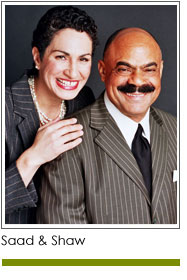 Most people who volunteer with nonprofits are ethical and deeply committed to the organizations and institutions they serve. But sometimes in the midst of doing good there may be a tendency to sidestep best practices that build credibility. One way to ensure credibility is for the board to craft, approve, and implement fundraising guidelines, policies, and procedures. These should be clearly worded and should support the work of board members, volunteers, staff, and donors.
Most people who volunteer with nonprofits are ethical and deeply committed to the organizations and institutions they serve. But sometimes in the midst of doing good there may be a tendency to sidestep best practices that build credibility. One way to ensure credibility is for the board to craft, approve, and implement fundraising guidelines, policies, and procedures. These should be clearly worded and should support the work of board members, volunteers, staff, and donors.
We advise our clients to take the time to identify the full spectrum of guidelines, policies, and procedures needed to support their fundraising efforts — before launching a campaign. Choosing to adopt policies on an “as needed” basis is choosing to be reactive instead of proactive. When policies and procedures are clearly communicated, the work of fundraising is made easier.
For example, if you do not have a pledge policy in place, it can be frustrating for a volunteer solicitor to learn that the three-year pledge she secured from a local business leader requires a signed pledge form. If she had known, she would have informed the donor at the time she solicited the pledge. Having to come back to secure a signed pledge form means reopening negotiations. It provides the donor with an opportunity to reconsider her giving. It sends the signal that your organization does not have its house in order. It can frustrate volunteers who are giving their valuable time.
Take the guesswork out of fundraising. Define your policies and procedures. If unusual circumstances arise, respond to them. But have the fundamentals in place and apply them consistently. Nothing can lose the goodwill of an investor or volunteer more quickly than a situation where the rules are changing constantly. Take time and work with your board, staff, volunteers, and donors to develop guidelines, policies, and procedures that are credible and in line with your mission and culture.
Here is a three-step process you can use as you put policies in place. Step one: the development committee of the board is responsible for drafting guidelines, policies, and procedures. They can work with your development staff, with a consultant, or with Internet resources to craft these. Step two: the documents created in step one should be brought to the full board for approval. Step three: once approved, the guidelines, policies, and procedures should be implemented by staff and referred to on an ongoing basis.
Details on policies and procedures for consideration are available from the Association of Fundraising Professionals (AFP) website www.afpnet.org. We also include examples of policies (and what they related to) in our recent book Prerequsites for Fundraising Success. Following the AFP Donor Bill of Rights and the AFP Code of Ethics are two items all nonprofits should review and consider adopting as part of their fundraising policies.
Copyright 2013 – Mel and Pearl Shaw
Mel and Pearl Shaw are the authors of “Prerequisites for Fundraising Success.” They position nonprofits for fundraising success. Visit them at www.saadandshaw.com.











